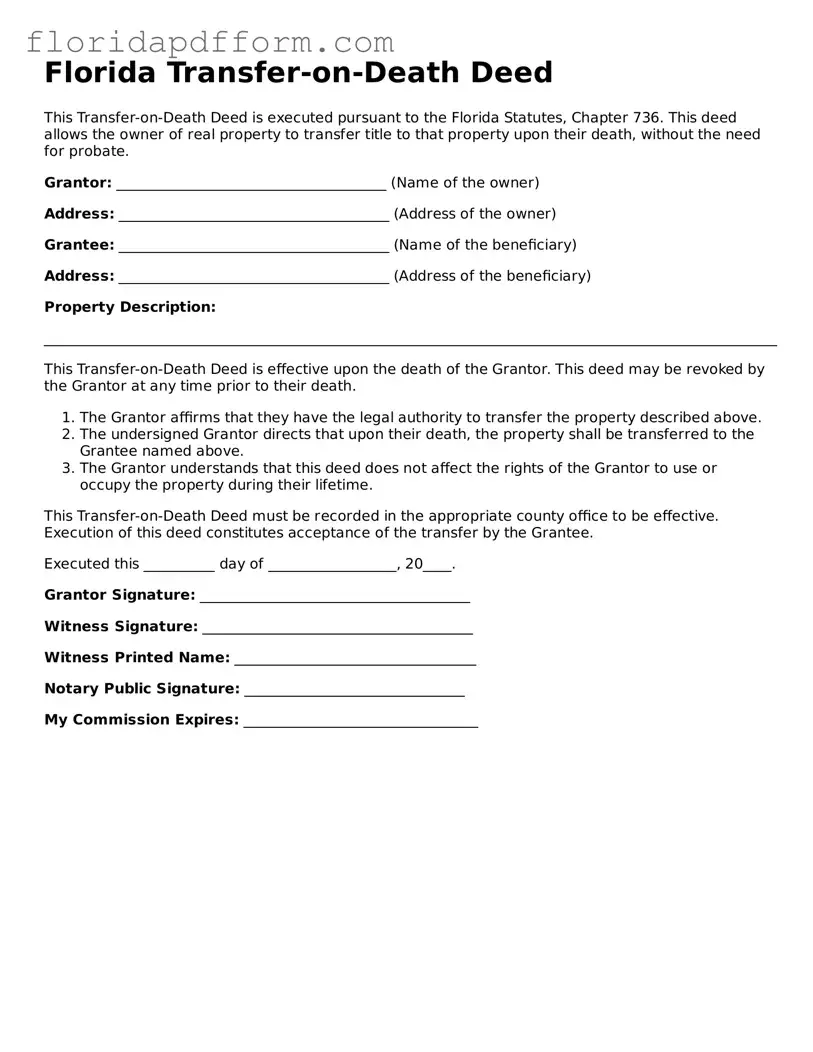How to Use Florida Transfer-on-Death Deed
Once you have the Florida Transfer-on-Death Deed form ready, you will need to complete it accurately to ensure it reflects your intentions regarding property transfer. After filling out the form, it must be signed and notarized before being recorded with the appropriate county office.
- Obtain the Florida Transfer-on-Death Deed form from a reliable source or the county clerk’s office.
- Fill in your name as the current property owner in the designated section.
- Provide a complete legal description of the property you wish to transfer. This information can typically be found on your property deed.
- Identify the beneficiary or beneficiaries by including their full names and addresses.
- Indicate whether the transfer is to be shared equally among multiple beneficiaries, if applicable.
- Sign the form in the presence of a notary public. Ensure the notary acknowledges your signature.
- Make copies of the signed and notarized deed for your records.
- File the original deed with the appropriate county clerk’s office where the property is located. Be sure to check for any filing fees.
